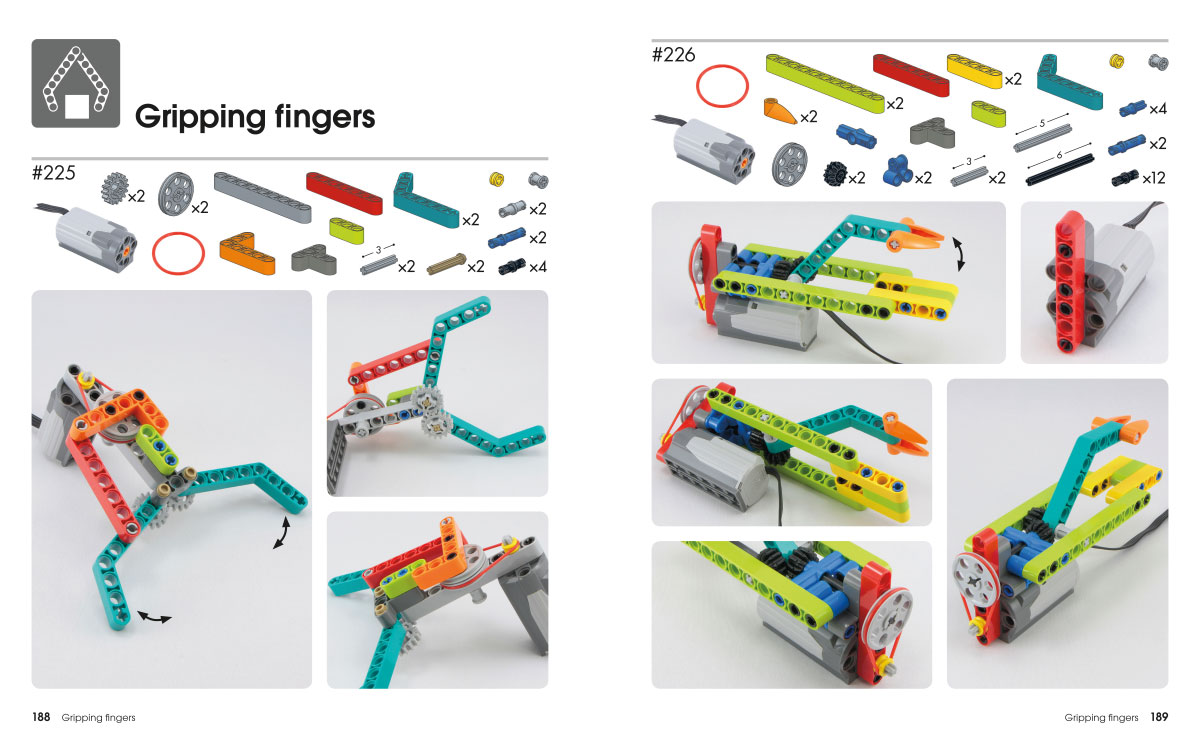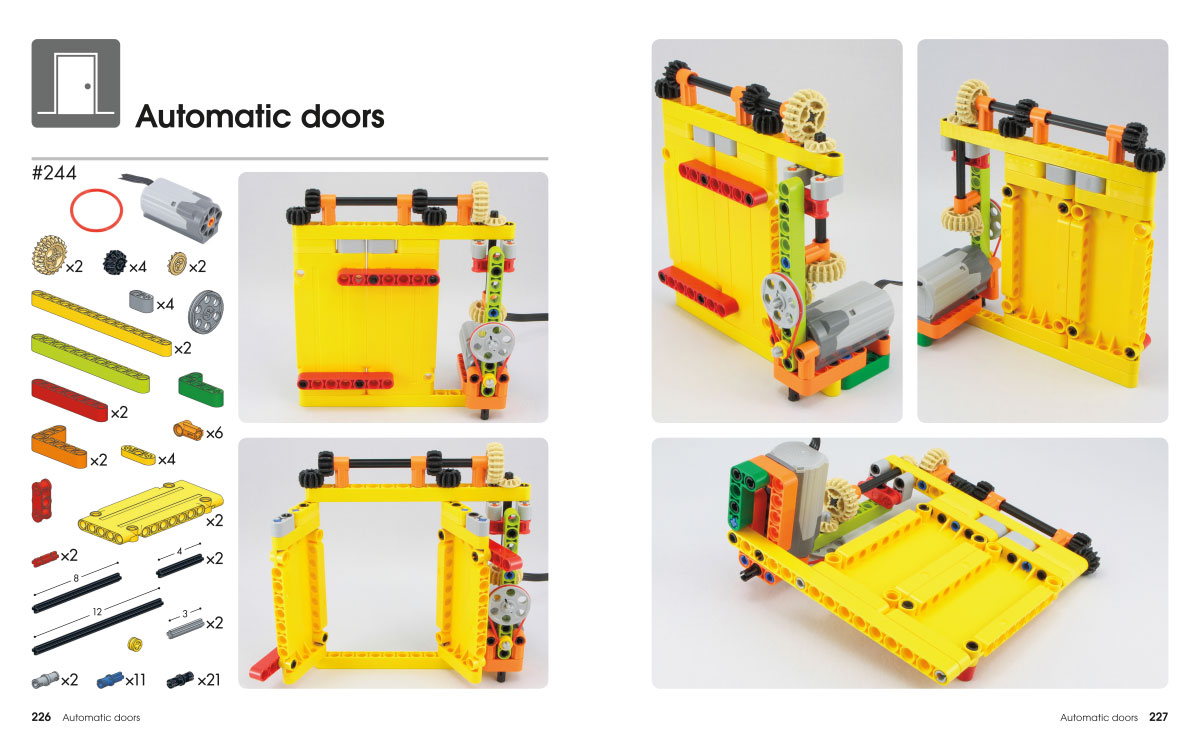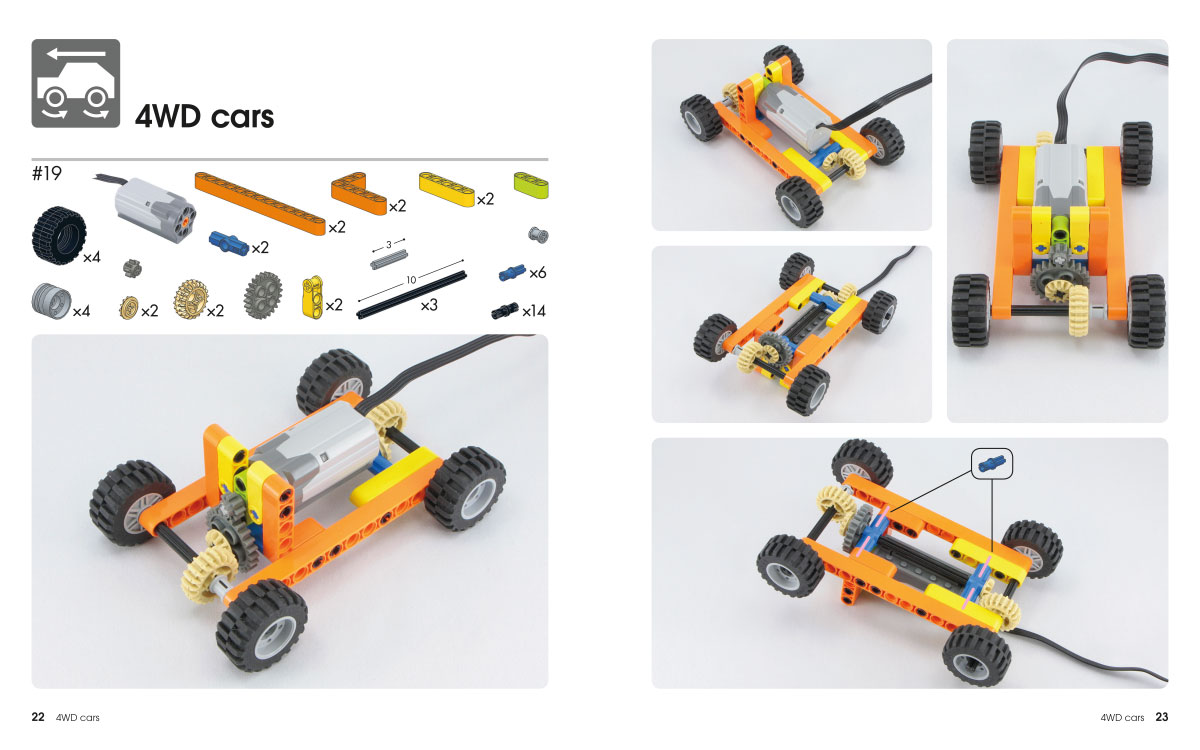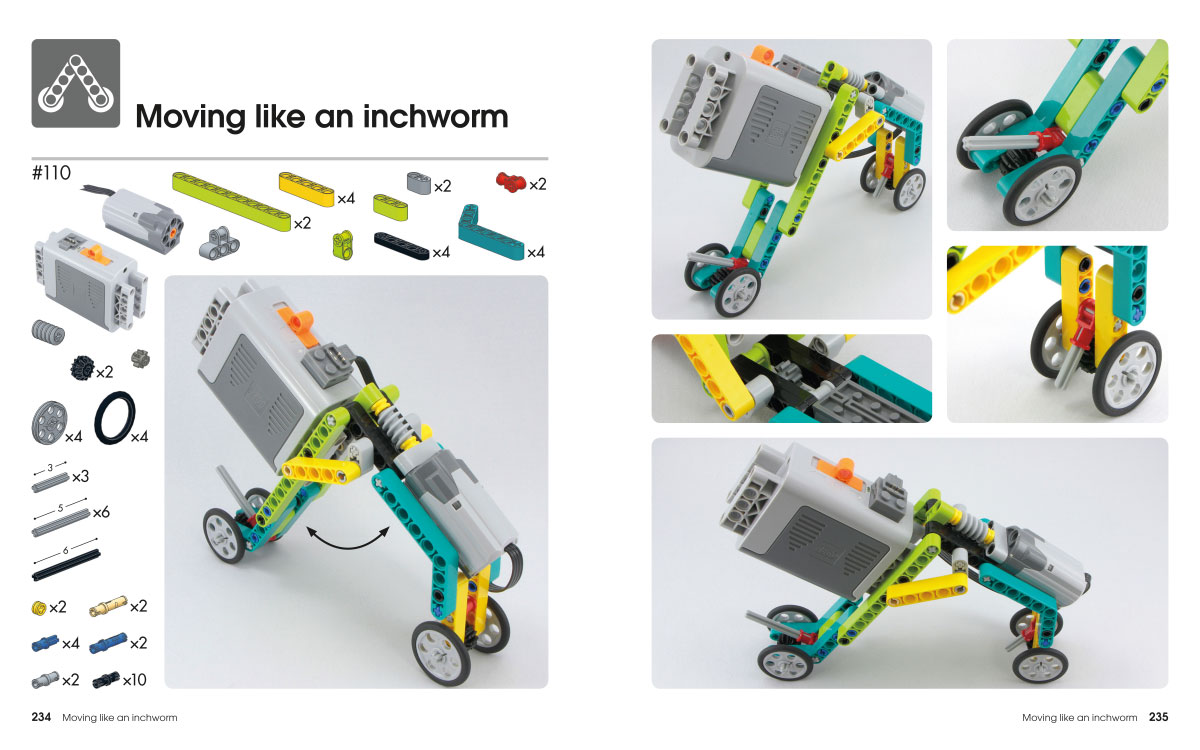Review—LEGO Power Functions Ideas Book
Yoshihito Isogawa is already a household name when it comes to clever LEGO Technic and MINDSTORMS contraptions. He gained international recognition in the AFOL community with his LEGO construction guide Tora No Maki [1]. Initially the book was published by Isogawa himself as a PDF file, but the book really became famous when No Starch published a print version in three volumes as The LEGO Technic Idea Book [2].
His next No Starch title was The LEGO MINDSTORMS EV3 Idea Book, in which he applied the same principles used in his LEGO Technic book to the (limited) inventory of the LEGO MINDSTORMS EV3 retail set 31313 [3]


This time Isogawa has prepared a two-volume set of books called The LEGO Power Functions Idea Book. In a sense the book is a cross between his original LEGO Technic Idea Book and the MINDSTORMS EV3 Idea Book, in the sense that on the one hand the setup of the book is heavily inspired on the former, and like the latter, most builds now also include an inventory of the parts that are necessary to build it. Even so, true to form, the book does not contain detailed building instructions of the models. Each model is built with pieces in a wide range of colours, making it easier to see what parts are used and how they are connected. Pictures from different angles of each build provide enough information to “reverse engineer” all of the contraptions for even the most inexperienced builder. Aside from the introduction the book has virtually no text. The images speak for themselves.

Volume one bears the title “Machines and Mechanisms”. It starts out with a number of concepts that are very similar to the LEGO Technic Idea Book, but incorporating a Power Functions motor in each one of them. This means that if you do not have the LEGO Technic Ideas books you will still get a valuable foundation in construction techniques, but if you do, the book in no way simply rehashes the concepts of the earlier series. For one thing a number of new LEGO parts have appeared over the years and these are used in new and innovative ways. A number of the construction techniques used in this volume are also completely new. As you build your way through the book, the builds become progressively more complex, going from different ways of transmitting rotation with gears, chains, pulleys and levers in part one, to implementing these techniques to create machines with arms, wings and other types of movement in part two which for example shows different ways of building gripping fingers, moving arms and even machines for drawing pictures.

You can see videos of some of the mechanisms in action at the following links:
Volume two is entitled “Cars and Contraptions” and is a clear continuation of volume one. It describes vehicles that use several of the ideas for transmitting motion from the first volume and adds further ideas. Again the constructions become progressively more complex and include vehicles with differentials, with suspension and even vehicles that can react to obstacles or avoid falling off a table. Part two looks at ways of moving forward without using wheels or tracks and includes several cool walkers. Part 3 describes special mechanisms including transmissions.
Car that senses the edge of a table
Once you have worked your way through both volumes you will probably be hungry for more. Ideally you should use the fragments and ideas provided in the books as inspiration for your own builds, but you may also want to consider getting the earlier LEGO Technic Ideas books for additional inspiration.

Both volumes of the LEGO Power Functions Ideas Book include a parts list, indicating which parts are used in either one or both of the volumes. All elements are currently used in LEGO sets and are reasonably easy to get. Even so, the underlying idea isn’t so much to show you how to build a specific contraption, but to inspire you to use construction ideas with different and varied LEGO parts. Often there is more than one way to achieve the same goal and different construction solutions can be applied to build the same (or a very similar) mechanism.

The two volumes contain 316 and 318 pages respectively, brimful of high quality images on beautiful glossy paper, and weigh approximately 1 kilo each!
2185